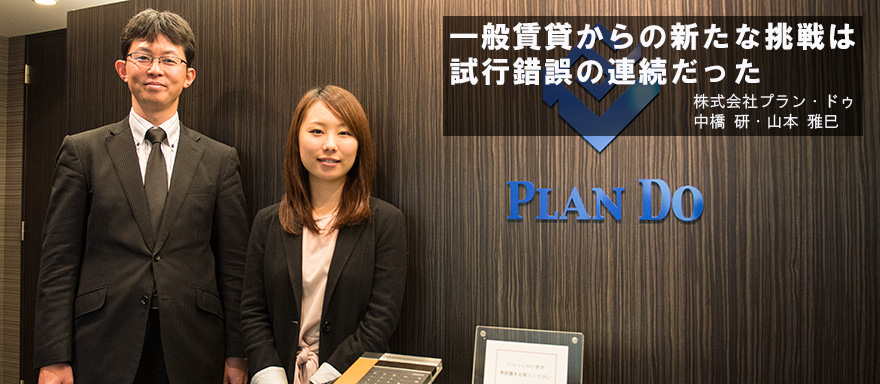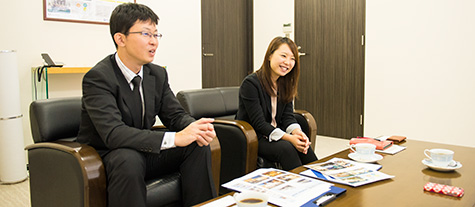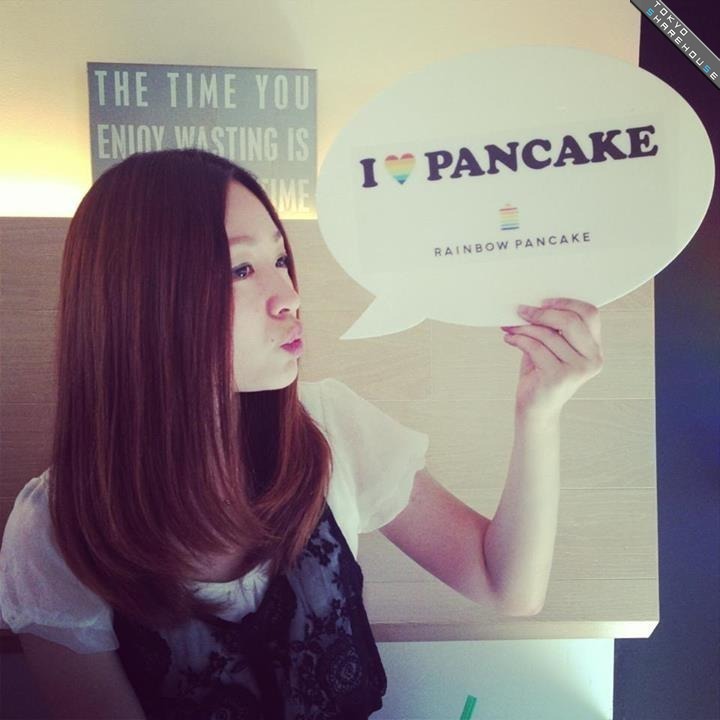Ken Nakahashi and Masami Yamamoto from Plan Do’s real estate solution department. Started venturing into the sharehouse industry in 2013 and are in charge of house management and operation.
Troubles and challenges in starting a sharehouse
I’ve seen many different sharehouses, and I always wondered how on earth a house’s concept is decided.
So, I always end up asking about the concept whenever I do an interview. Knowing the background story throws a whole new light on things, don’t you think?
This time I interviewed Mr. Nakahashi and Ms. Yamamoto, employees from a rental real estate business venturing into the sharehouse industry. They are creating sharehouses on a case by case basis to suit the area, making the most of existing properties.
I couldn’t help but wonder what kind of share house they would make if they were to create one in the area I live in.
Let’s move onto the interview, because Plan Do’s background is quite interesting...
- ---Firstly, tell us about the concept of the sharehouses your company manages.
- Mr. Nakahashi
-
Let’s see. We want to draw the line between a guest house and a sharehouse by cultivating a place that is of higher class than a normal rental apartment. The catchphrase would be “A one room apartment you’ll want to come home to.” We’re not competitive in cost, we’re aiming for a house that proposes a new lifestyle with added value.
- ---Added value? What do you mean by that exactly?
- Mr. Nakahashi
-
It depends on the property, but our Nishi-Funabashi house, for example, has rooms complete with a kitchen, bathroom and toilet the same as a one room apartment, and in addition there is 153.05m² of communal space. For example a large, spacious kitchen and living room, to name a few. You could say our house is “A one room apartment + 153.05m²”, which is different from normal one room apartments.
- ---153.05m² is quite a lot of space! What kind of things do the tenants do in that area?
- Ms. Yamamoto
-
I don’t know whether it’s because the kitchen is so spacious or not, but we’ve got a great group of tenants who love cooking and they often hold cook-offs and sweets-making tournaments there. There are many males in the house who are good at cooking and I heard they all made paella the other day. The tenants are always holding their own events like going camping, and just the other day they held a halloween party. They recruit participants via a group on LINE and the communal message board in the house. It seems like they’re always having fun.
- ---I think I want to live there myself! Incidentally do your tenants share any common characteristics?
- Mr. Nakahashi
-
The tenants we have at the moment are all very good at taking care of others. In the past we’ve had someone come and look at the kitchen then ask how many people were living in the house. It turned they wanted to make dinner for everyone! She is kind of like a house mother. There are a lot of tenants like her and everyone just helps each other out, it’s great.
- ---They are the kind of people you want living in the house, for sure!
- Mr. Nakahashi
-
That’s right. We want people who are able to maintain the current status quo, people who express themselves through communication with others. Also, our Nishi-Funabashi house is 12-minutes by train to Disneyland, so I recommend it for Disney cast members. At the moment we have about 3 of them living in the house. Plenty of train lines run through the area so if you work in Akihabara you just jump on a train and don’t need to change lines at all.
Thinking on the same wavelength as the customer is key
- ---Why did you decided to move into sharehouses after dealing with normal rental properties for so long?
- Mr. Nakahashi
-
It was all because of the Nishi-Funabashi property. We had been working with the idea of turning abandoned properties into warehouses at first, but the one in Nishi-Funabashi had so much space it seemed like a waste. It was also impossible to make it into apartments, so we decided to try our luck with a sharehouse.
- ---Such simple beginnings!
- Mr. Nakahashi
-
Of course we didn’t have any experience running a sharehouse, so we had a discussion within the company to start this experiment and we’re finding our feet one step at a time. We were going to keep in line with the structure our previous rental properties, but had no luck at local real estate businesses, which surprised us. We got a few bites as soon as we put it up on a sharehouse website and came to realize that people searching for sharehouses are very different from those looking for regular rental properties.
- ---Was it quite some time before you came to that distinction?
- Mr. Nakahashi
-
Well, at first we had trouble with the difference and couldn’t get any tenants. Sharehouses are a recent thing and I thought it would catch on, but contrary to my expectations it didn’t. I then realized that people who go to the real estate agent aren’t actually looking for this kind of lifestyle. Even if showing the property to customers, the agents themselves have never lived in a sharehouse and therefore cannot convey its appeal.
- ---So after a bit of trial and error and a big realization, here you are today! What’s up next?
- Mr. Nakahashi
-
There aren’t many people who want to live out in the suburbs, but we want to create a base for people with like-minded ideals and similar hobbies, a house that people will want to live in because there is some kind of appeal for them. For example, our house in Urawa is a house for people who support the Urawa Red Diamond football club, and they can have a great time watching and talking about the games together. Well, if the tenants get too rowdy we’ll get complaints from the neighbors, so maybe have just a little fun… but is that even possible? (laughs) When people with the same hobbies and pastimes get together everyone is bound to have a great time, and we hope to continue with the project while making the most of its location.
- ---I’ll be looking forward to your next house! Finally, a message to our readers?
- Mr. Nakahashi
-
Try living in our Funabashi house. (laughs)
At least come on over for an inspection. I’d love to have anyone thinking about living in a sharehouse for the first time come on over and see how it compares to their expectations. To be honest, some people like it, some people don’t. It’s not like you absolutely must move in just by having a look, so just visit the house and see what it’s like, no big deal. Put those thoughts into actions. Incidentally, if you’re already living in a sharehouse and want to move, I’d love to hear your thoughts on your dissatisfaction with your current house. That way we can suggest a place to suit your needs, so please let us know!
The way Mr. Nakahashi talks about his sharehouses makes us really want to move into one - and after all, he does have experience with rental properties - but hearing about all the trial and error that went into it, I can understand why.
Sharehouses may be on the rise, but this doesn’t mean that they will necessarily be successful. What I learned from this interview is that thinking on the same wavelength as your target market and determining what is necessary and what is important is the main key. This is something that can be said about any kind of merchandise and about people, as well.
PLENDY Nishi-Funabashi, which was mentioned in the article earlier, was unfortunately at full capacity at the time this article was written. Those interested in the house should check back with the site periodically for vacant rooms. PLENDY-SHARE Higashi-Urawa, a Sports & Food health-conscious concept house will be opening, so those interested should check out the information below.





